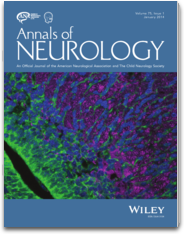May 2008 - A JDRF collaboration between Johns Hopkins researchers and Genentech has shown that a drug for the treatment of diabetic eye disease has performed better in clinical trials than the current standard treatment using laser surgery.
These findings, representing the six-month end-point evaluation of the READ-2 clinical trial coordinated by The Johns Hopkins University, were presented Monday at the 2008 Annual Meeting of The Association for Research in Vision and Ophthalmology, in Fort Lauderdale, Florida.
According to Barbara Araneo, Ph.D., director of the complications program at JDRF, "These are very encouraging results, showing that drugs we have been testing in human clinical trials can be effective in slowing or stopping the effects of eye disease brought on by diabetes."
The multi-center READ-2 Study (Ranibizumab for Edema of the mAcula in Diabetes), which began in December 2006, was designed to test the long-term safety and effectiveness of injections of the drug ranibizumab in patients with diabetic macular edema, a condition characterized by swelling of the central portion of the retina, or macula, at the back of the eye. In addition, the trial sought to determine the comparative efficacy of ranibizumab versus conventional treatment - laser photocoagulation therapy - or both together.
Macular edema, one of the most common causes of blindness, occurs when fluid and protein deposits collect on or under the macula, causing it to thicken and swell.
Continue Reading Below ↓↓↓
Participating in the clinical trial were 126 diabetic patients (average age 62) with documented Diabetic Macular Edema prior to enrollment; the majority had 20/80 vision in the eye that was treated. Patients were randomly assigned to receive one of three interventions: ranibizumab, laser photocoagulation, or a combination of the two treatments. At each visit over the course of the six-month treatment period, patients were evaluated for vision, retinal thickening, and general eye health. Although the study ended at six months, patients will be monitored for two years.
Patients treated with ranibizumab experienced significantly greater improvements in visual acuity, or clarity of vision, compared with patients receiving either of the other interventions. On average, the vision of ranibizumab-treated patients improved to 20/63 at month six, compared with essentially unchanged acuity scores of about 20/80 in both the laser and the combination treatment groups.
In addition, patients treated with ranibizumab had a 56 percent reduction in excess retinal thickness, whereas only an 11 percent reduction was seen in those receiving laser treatments.
The READ-2 study, which was funded as part of JDRF's research addressing the complications of type 1 diabetes, is also supported by Johns Hopkins and the pharmaceutical company Genentech. It builds on the results of the 2007 READ-1 Study, a Phase 1 trial that was also a collaboration with these two organizations. This first trial established the ability of ranibizumab to reduce edema and improve visual acuity in patients with diabetic macular edema.
The READ-2 study is taking place at 14 clinical centers around the United States, including at the University of California, San Francisco, the Yale Eye Center in New Haven, Connecticut, and Emory University in Atlanta, Georgia. Although the study is no longer recruiting patients, additional study information can be found at www.clinicaltrials.org by entering the search term "READ-2".
Source: Juvenile Diabetes Research Foundation International










